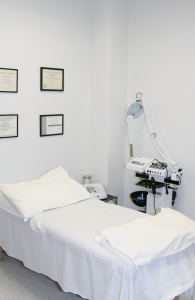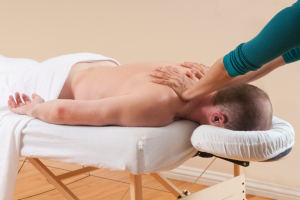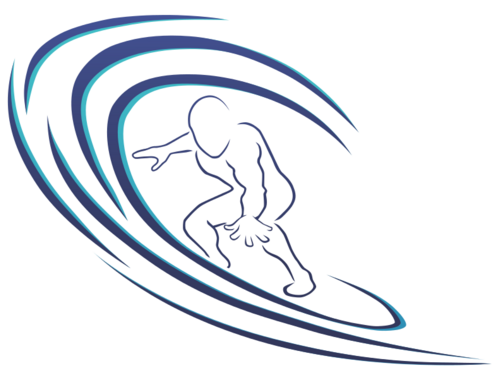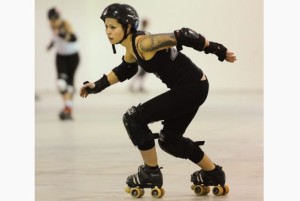Massage Therapy
Overly contracted muscles are relaxed through unique massage techniques which stimulate damaged feedback nerves releasing lactic acid and promoting healing.
What you can expect:
- Relaxing environment
- Relieve pain as well as treat the underlying causes of chronic symptoms (i.e. pain, inflexibility, spasms, etc.) and restore function and mobility
- Expert treatment by massage therapist specialized in Neuromuscular Therapeutic Massage
 Massage therapy was once a luxurious pastime individuals sought in order to be pampered and relaxed. In the past 50 years, however, it has become an effective aid and form of treatment in many clinical settings (7). For example, according to a survey conducted by the American Massage Therapy Association, “56% of people have received a massage for one or more of the following reasons: soreness, stiffness or spasms, to relieve or manage stress, for prevention or to improve quality of life, injury recovery or rehabilitation, to keep fit or healthy/maintain wellness, or to control headaches or migraines” (3).
Massage therapy was once a luxurious pastime individuals sought in order to be pampered and relaxed. In the past 50 years, however, it has become an effective aid and form of treatment in many clinical settings (7). For example, according to a survey conducted by the American Massage Therapy Association, “56% of people have received a massage for one or more of the following reasons: soreness, stiffness or spasms, to relieve or manage stress, for prevention or to improve quality of life, injury recovery or rehabilitation, to keep fit or healthy/maintain wellness, or to control headaches or migraines” (3).
The origin of massage dates back thousands of years to both Ancient Greek and Chinese cultures. Historians have documented Chinese writings from 2500 BC that describe the uses of massage to treat a number of medical issues, as well as writings of Ancient Greek trainers preparing Olympians for competition by rubbing their muscles with oil (1,7).
While there are over 80 different types of massage techniques, the fundamental basis of massage therapy is the rubbing or kneading of the soft tissues of the body (9). Some massage therapy techniques are gentle and relaxing, like the Swedish Massage, while others are more active and aggressive, such as Deep Tissue or Cross-Friction Massage.
At Pacific Coast Sports Medicine, the primary type of massage we specialize in is called Neuromuscular Therapeutic Massage.
 This therapy aims to not only relieve pain temporarily, but to also treat the underlying causes of chronic symptoms (i.e. pain, inflexibility, spasms, etc.) and restore function and mobility (9). Stiff, overly contracted muscles can be found in people of all ages, athletic and non-athletic alike. Left untreated, symptoms can—and often do—worsen due to the resulting factors of muscle spasms: our body’s natural defense mechanism against pain and injury and the decreased blood flow to tissues.
This therapy aims to not only relieve pain temporarily, but to also treat the underlying causes of chronic symptoms (i.e. pain, inflexibility, spasms, etc.) and restore function and mobility (9). Stiff, overly contracted muscles can be found in people of all ages, athletic and non-athletic alike. Left untreated, symptoms can—and often do—worsen due to the resulting factors of muscle spasms: our body’s natural defense mechanism against pain and injury and the decreased blood flow to tissues.
One way Neuromuscular Therapeutic Massage is used is to treat muscle spasms and the pain that spurs and follows them.
A common example is aggravation of the back by doing slight tasks, such as bending over. At first, the pain isn’t always tremendous. However, the body reacts by contracting and tensing muscles in the area of injury, acting as a natural splint to prevent further damage from occurring. These muscle contractions (or spams) decrease blood flow in the area of pain, causing a build up of lactic acid. Despite the pain experienced due to tense muscles, diminished blood flow, and increased toxicity from high concentrations of lactic acid, sensory signals to the brain become weak. The brain translates this as the muscles being relaxed and unprotected…causing them to spasm, thereby entering a vicious cycle!
Thankfully, with precise technique, our qualified massage therapists are able to break the cycle and achieve muscle relaxation by stimulating the damaged feedback nerves that communicate with the brain (10).
Massage therapy has been demonstrated to treat and have positive effects on numerous conditions and symptoms, for example:
- Pain of osteoarthritis of the knee (11)
- Pain and limited function due to chronic low back pain (2)
- Inflammation after exercise (4)
- Balance, cardiovascular, and neurological difficulties in older adults (12)
- Pain in rheumatoid arthritis (5,8)
- Pain, anxiety, and depression in patients diagnosed with fibromyalgia (6)
Consult our clinicians at Pacific Coast Sports Medicine to see if massage therapy is a suitable form of treatment for your needs.
- Brummitt J. The role of massage in sports performance and rehabilitation: current evidence and future direction. N Am J Sports Phys Ther. 2008;3(1):7-21.
- Cherkin et al. A comparison of the effects of 2 types of massage and usual care on chronic low back pain: a randomized, controlled trial. Ann Intern Med. 2011;155(1):1-9.
- Consumer Survey Fact Sheet. American Massage Therapy Association Web site. http://www.amtamassage.org/research/Consumer-Survey-Fact-Sheets.html. Published October 2014. Accessed February 16, 2015.
- Crane et al. Massage therapy attenuates inflammatory signaling after exercise-induced muscle damage. Sci Transl Med. 2012;4(119):119ra13.
- Field T, Diego M, Delgado J, Garcia D, Funk CG. Rheumatoid arthritis in upper limbs benefits from moderate pressure massage therapy. Complement Ther Clin Pract. 2013;19(2):101-3.
- Li Y-h, Wang F-y, Feng C-q, Yang X-f, Sun Y-h. Message therapy for fibromyalgia: a systematic review and meta-analysis of randomized controlled trials. PLoS One. 2014;9(2):e89304.
- Wikipedia. http://en.wikipedia.org/wiki/Massage. Modified February 7, 2015. Accessed February 18, 2015.
- Massage Research Roundup. American Massage Therapy Association Web site. http://www.amtamassage.org/research/Massage-Therapy-Research-Roundup.html. Accessed February 16, 2015.
- Massage Therapy – Topic Overview. WebMD Web site. http://www.webmd.com/balance/stress-management/tc/massage-therapy-topic-overview. Updated May 9, 2013. Accessed February 19, 2015.
- Neuromuscular Therapy. Robert Feldman NMT Web site. http://www.feldmannmt.com. Accessed February 17, 2015.
- Perlman et al. Massage therapy for osteoarthritis of the knee: a randomized dose-finding trial. PLoS One. 2012;7(2):e30248.
- Sefton et al. Six weeks of massage therapy produces changes in balance, neurological and cardiovascular measures in older persons. Int J Ther Massage Bodywork. 2012;5(3):28-40.

